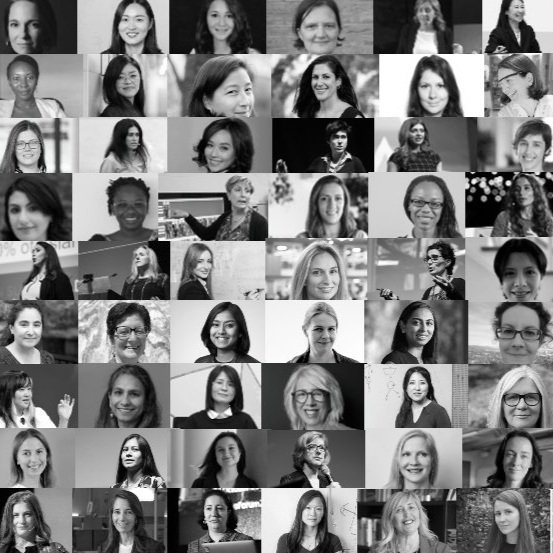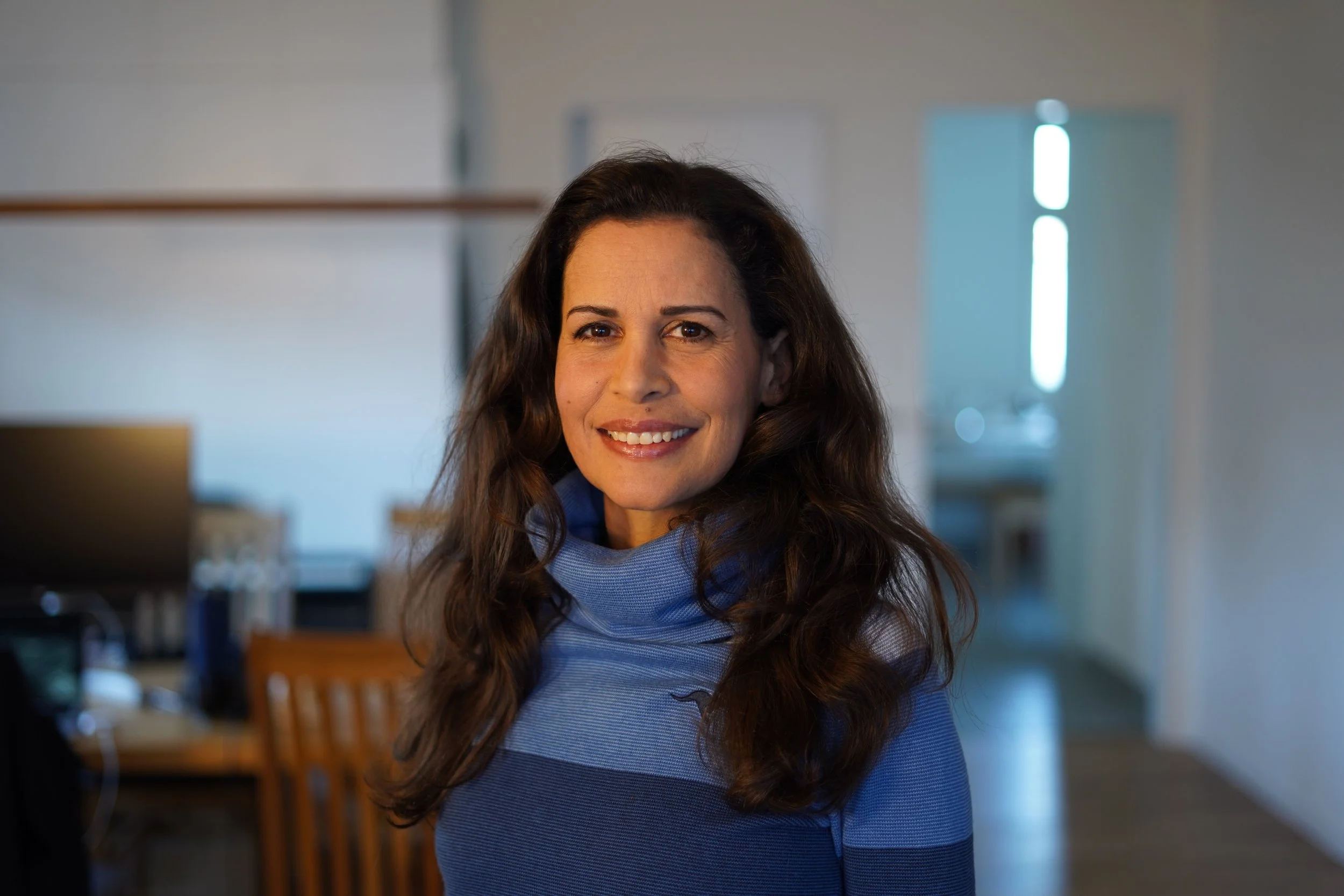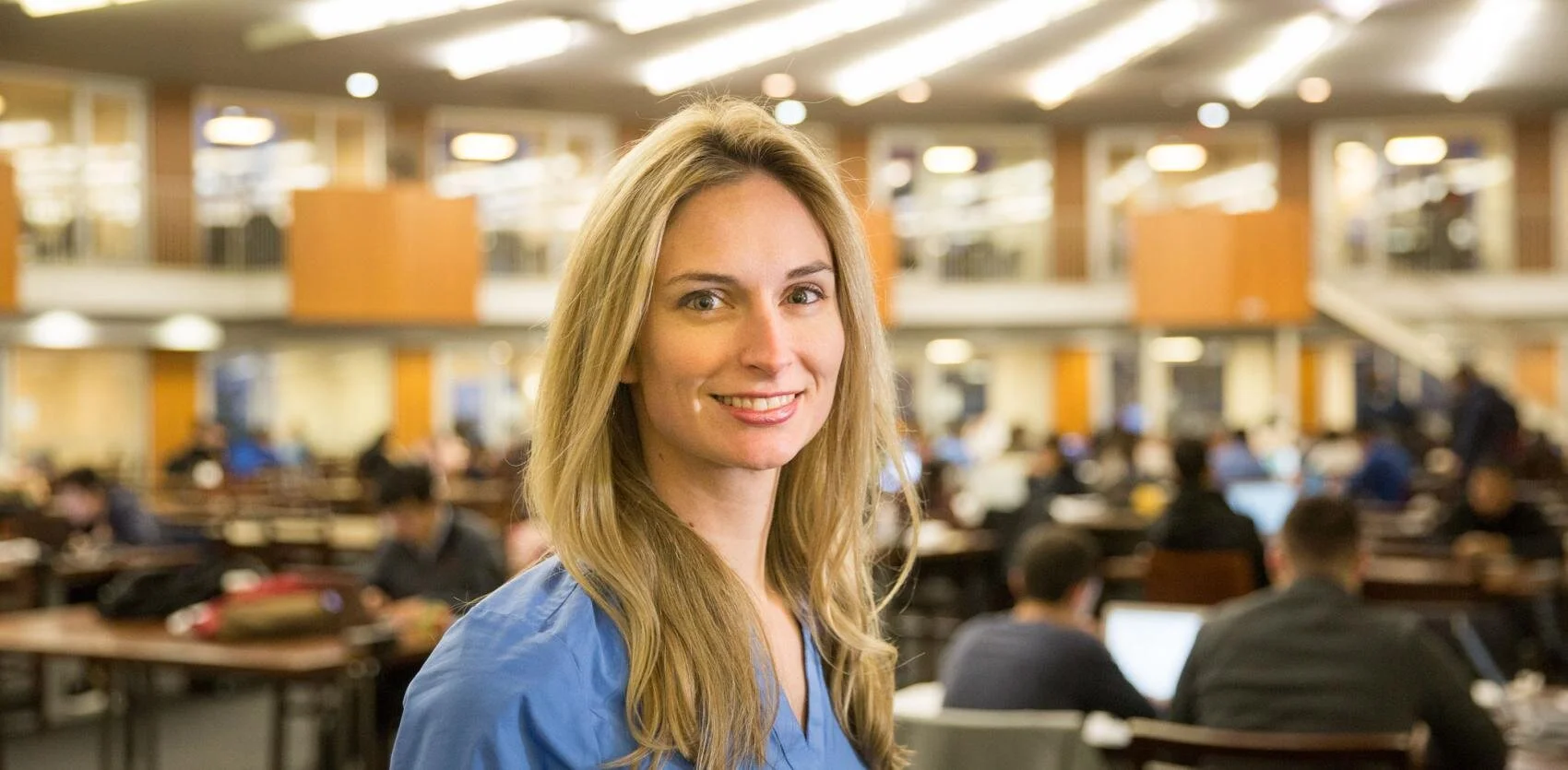“No Perfect Time to Start a Company” Says Gaile Gordon on Transitioning From Researcher to Successful Entrepreneur
/LDV Capital invests in people building businesses powered by visual technologies. We thrive on collaborating with deep tech teams leveraging computer vision, machine learning, and artificial intelligence to analyze visual data. We are the only venture capital firm with this thesis. We regularly host Vision events – check out when the next one is scheduled.
Our Women Leading Visual Tech series is here to showcase the leading women whose work in visual tech is reshaping business and society.
Our third interview in this series is with Gaile Gordon. She was interviewed by LDV Capital’s Abigail Hunter-Syed. (Note: After five years with LDV Capital, Abby decided to leave LDV to take a corporate role with fewer responsibilities that will allow her to have more time to focus on her young kids during these crazy times.)
Dr. Gaile Gordon has over 20 years of experience in computer vision-related products and R&D leadership. She has a proven track record transitioning technology from R&D to production in both enterprise and consumer markets. Dr. Gordon is the co-founder of TYZX, which produced hardware for accelerated 3D cameras and computer vision applications for a variety of markets including security, robotics, and automotive industries.
TYZX was acquired by Intel in 2012 and fueled their RealSense 3D technology products. Her product experience spans custom ASICs, firmware, software APIs, to end-user applications. Gaile received a Ph.D. from Harvard, an MS and a BS from the MIT AI Lab. Gaile advises early-stage companies, is an Expert in Residence with us at LDV Capital, and is an active angel investor.
Following is the text version of the interview and the unedited video can be found below.
Gaile Gordon took part in our 2016 LDV Vision Summit as a panelist discussing visual sensors and as a judge of our Computer Vision Challenge © Robert Wright
Abby: How would you describe what you do in simple terms?
Gaile: Most of my career has focused on enabling computers to understand what is going on physically in the real world – giving the computer a sense of awareness like humans get from their eyes. I think it’s easier to solve those problems when you can see in 3D, understanding the shape of the world, not just the colors and reflected light from the scene like you get in a flat photograph. I spent many years making it possible, and easier for engineers to get 3D real-time data from small, low power, cheap sensors, and to interpret that data. Now, I help other people who are starting companies with advice and funding so they can solve the problems that motivate them and move our world forward in a better way.
Abby: Do you remember what was your career-defining moment? How did your fascination with computer vision start?
Gaile: I was fortunate to have an early summer internship that introduced me to robotics. I was accepted in an NSF summer program and got a chance to work at NIST with some of the engineers who started their careers developing NASA rovers. Once you have some experience in a field it’s great leverage for the next opportunity. So later at MIT I interviewed for a BS/MS Coop program and got a job at a company working in robotics for manufacturing automation.
It was during my first summer there that my lab bought a computer vision system – a fancy camera, with many boards to digitize the image data, and enable you to accelerate image processing tasks so they could be achieved in something close to “real-time”. I got hooked.
I happened to also have a serious interest in photography, and working with images in a more analytic way seemed like a great way to combine my interests in computer science and photography. I’m a very hands-on person and the immediate satisfaction of seeing the processing results in real-time also had big appeal.
I can’t stress enough how important summer jobs, as early as possible, were to my career. Those experiences also gave me an advantage in my classes since I could understand the application of what I was studying in a more concrete way to real products and systems. So as one thing led to another and I have stayed close to the computer vision world for my whole career.
Abby: How did you decide to start your first company and why?
Gaile: I moved from Boston to Silicon Valley in the mid-90s. The startup bug was like a virus in the water here. Opportunities for new products and companies permeated every conversation.
Having worked in academic and government research for a number of years, where the user base for your work is often small, the idea of making something that someone else would buy and use was what excited me.
I went to work for Interval Research at first, which was a commercial research organization funded by Paul Allen aimed at spinning out what we would now call deep tech companies. I met my co-founder (John Woodfill) there and we ended up merging his interest in building stereo vision hardware with my interest in person detection and tracking from 3D data to create a new venture idea. We had achieved our exit velocity and were about to spin-out TYZX – in April 2000 – when Paul Allen suddenly shut down Interval and pulled his support for our venture. We were mortified. We took it very personally until we understood that it wasn’t just Interval or our spin-out that was being closed. We were witnessing the dotcom bubble bursting and our entire economy was crashing. So, not a great time to start a company, right? Well – it was the time for us.
You can’t wait for the perfect time to start a company, sometimes you have to seize an opportunity and make it work.
We had built chips, boards, cameras, demonstration software, even written patents, but more importantly, we felt strongly that real-time 3D visual data would enable new products in a large number of industries. We couldn’t let it go. It took us a year to negotiate with Paul for the rights to the technology, during which time we turned our technology away from retail (the market we initially focused on) into a product platform play and teamed up with our third co-founder, CEO Ron Buck.
From left to right: Evan Nisselson (Founder & General Partner at LDV Capital), Gaile Gordon (Product & Engineering Executive, Advisor, Investor), Jan Kautz (Vice President of Learning and Perception Research at NVIDIA), Chris Rill (CTO at Perch and Co-Founder at Canary) © Robert Wright
Abby: You were involved with research before you became an entrepreneur and have a Ph.D. Can you talk about how that impacted your perspective and opportunities as you started your company?
Gaile: Interesting question. At the time we started TYZX we were so excited about our technology and how useful we knew it could be to solve real-time interactive vision problems. But coming from more of research background, we were, to be honest, a bit naive about building a viable business. I think this is a pretty common entrepreneurial story for deep tech companies. I think if we had been seasoned entrepreneurs, we would have realized we were early to the market in a very tough hardware-focused business and may have quit before we started.
But a research background helped in other ways I would not have expected. Since we were very early to the market we had to spend the first few years evangelizing the whole idea of why 3D visual sensors could be helpful. Unlike today, when even people outside the computer vision field are familiar with the concepts of LIDAR and may have cell phones in their pockets with a 3D sensor on it, people were not very familiar with 3D sensors and real-time 3D sensors were just emerging.
I’d say it was critical during that time to have strong communication skills and to be very comfortable with fast prototyping so we could easily demonstrate our sensors in the clients’ domain. For me, I think good writing/presentation skills were something I honed in grad school by writing solid technical papers. Then afterward, working as a principal investigator in the government research arena taught me how to put together a successful funding proposal. That turned out to be more valuable than I would have anticipated since we actually used SBIR contracts from my former DARPA connections as a funding source in the early years of TYZX. It turns out that experience also helped in writing strong patents.
For a deep tech company, patents are part of your currency.
I think I should also mention that as a woman in technology, a solid educational background didn’t hurt. A good pedigree can help people to briefly suspend their biases… it might help get you a meeting. In the end though, I’ve always found that when you sit around a table with customers who have a problem you can help them solve, they no longer care too much about whether you look like them or what they thought of you when you first walked into the room.
Abby: You co-founded TYZX – a company that commercialized real-time 3D sensors. What are some of the current applications of this technology?
Gaile: Applications haven’t really changed. They can just be addressed by continually cheaper and smaller devices.
Automotive applications continue to be appealing. This would be for monitoring what is going on around the car or inside the car – better interpretation of obstacles or other objects around the car, and understanding if the driver is able to engage if needed in an ADAS system, or if they are not attentive to the road during normal driving. Although some of these applications can be done from 2D camera data as well, having a richer data source such as a 3D sensor can provide better reliability, for instance, because there is much less confusion during rapidly changing lighting conditions. It can also simplify the downstream CV algorithms.
Robotics is another area where 3D sensors are important. Sensing for navigation for moving platforms of any size including drones or assistance in manipulation or inspection tasks for logistics and manufacturing applications. Small, low power sensing is particularly valuable for smaller platforms which are battery or weight limited.
AR and VR is an area where small 3D sensors can be really helpful to provide data to help with mapping the motion and position of the head-mounted display or understanding the surrounding room for the safety of the user. In AR, the shape of the real environment is needed so that virtual content can be rendered correctly.
A panel discussion on sensors empowering businesses and humanity © Robert Wright
Abby: The dotcom bubble burst in March/April 2000 sparking a serious recession. TYZX was founded in June 2000. What advice can you pass on to entrepreneurs in the midst of the current crisis?
Gaile: My main advice is to realize that VC funding is not the only way to fund a startup. Since the VC market essentially closed down in 2000, TYZX had to rely on more traditional funding approaches. We bootstrapped the company and supplemented it with government contracts.
Bootstrapping – funding the company through product sales, was possible for us because we already had physical products to sell pretty early on. But to have funds to pay ourselves and move the company forward, we had to sell them at high prices. So our initial market was focused on research groups with universities and corporate labs who had the budget and desire to work with cutting edge systems. For a number of years, our income was about 50/50 product sales, including custom development, and government funding. We also kept the team small. So everyone in the company was an absolute expert at what they did and very hands-on. It was like running a traditional business – you need to balance the budget!
One difference between the crisis in 2000 and now is that the root of the issue in 2000 was actually speculation and irresponsible behavior in the tech world! So funding dried up for years and funders became much more risk-averse.
Today, of course, the pandemic is quite a different story. In fact, the tech world can actually help with solutions – on many fronts, not just in healthcare directly. VCs are still cautiously active, however, many potential customers are by necessity pulling back purchases because their business has been impacted. Today it is possible to concentrate on markets, at least temporarily, that are continuing to work well in the pandemic era.
Dr. Gaile Gordon at LDV Vision Summit in 2016 © Robert Wright
Abby: At what point did the acquisition happen? Is there any advice that you would like to give to first-time founders who dream of selling their company to a corporation?
Gaile: We began working with Intel at least 6 months before the acquisition. We initially were doing contract development work as we did with many customers to demonstrate the use of our products in an application area of interest. This work led to a discussion of funding a new chip development project aimed at the consumer market. Eventually, it was clear that there were substantial issues with the intellectual property involved. If we developed a chip for use by Intel, what happens when that is successful and we want to do the next-generation chip or other derived products? We would just have to start the negotiations over again for that new project! The solution to that pain point was an acquisition – which is not an uncommon conclusion. For us, Intel was a good option since our goal was to get our technology into consumer applications – at consumer prices. Intel could easily finance the chip development necessary and help establish relationships with higher volume buyers. So our goals were well aligned.
My advice for founders is to look at every customer as a possible acquirer and vice-versa. The most productive acquisitions may happen when both sides have worked closely together already – there may be fewer surprises and less of a due diligence hurdle.
I’m personally really pleased that Intel continues to develop and sell products based on our TYZX technology – the RealSense 3D sensors – 8 years after our acquisition.
Abby: What are some of the common challenges at the crossroads of deep vision tech & entrepreneurship that you help startups work through as an advisor & investor?
Gaile: Many entrepreneurs have invested a lot of time, energy, and creativity into their technology before they start to talk with investors – it’s their baby and they are personally deeply invested. In some cases, it is hard for the founders to step back and look at their opportunity from an investor’s perspective. Having been through this myself, from the tech entrepreneur side and now as an early-stage investor, I can help make sure they have great answers to the most common questions that investors would have about their tech, their team, and how they can demonstrate value to real end-customers as early as possible. Often we can talk through the markets they are focused on to highlight issues that they may not have seen before like understanding more realistically the length of the sales cycle they will face and potentially how to remove friction.
Watch the full version of this interview below and stay tuned for our next story!














